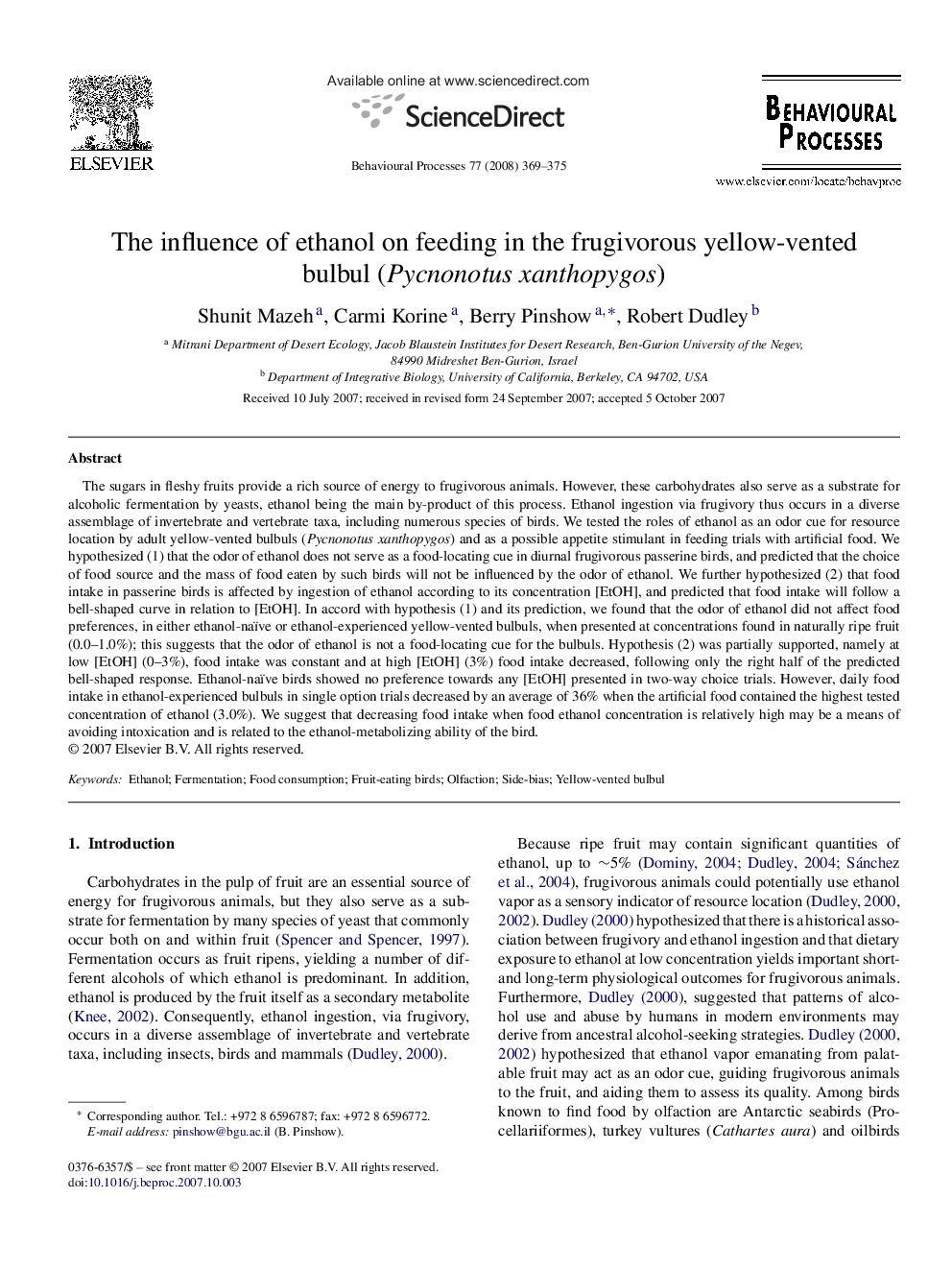| کد مقاله | کد نشریه | سال انتشار | مقاله انگلیسی | نسخه تمام متن |
|---|---|---|---|---|
| 2427840 | 1105982 | 2008 | 7 صفحه PDF | دانلود رایگان |

The sugars in fleshy fruits provide a rich source of energy to frugivorous animals. However, these carbohydrates also serve as a substrate for alcoholic fermentation by yeasts, ethanol being the main by-product of this process. Ethanol ingestion via frugivory thus occurs in a diverse assemblage of invertebrate and vertebrate taxa, including numerous species of birds. We tested the roles of ethanol as an odor cue for resource location by adult yellow-vented bulbuls (Pycnonotus xanthopygos) and as a possible appetite stimulant in feeding trials with artificial food. We hypothesized (1) that the odor of ethanol does not serve as a food-locating cue in diurnal frugivorous passerine birds, and predicted that the choice of food source and the mass of food eaten by such birds will not be influenced by the odor of ethanol. We further hypothesized (2) that food intake in passerine birds is affected by ingestion of ethanol according to its concentration [EtOH], and predicted that food intake will follow a bell-shaped curve in relation to [EtOH]. In accord with hypothesis (1) and its prediction, we found that the odor of ethanol did not affect food preferences, in either ethanol-naïve or ethanol-experienced yellow-vented bulbuls, when presented at concentrations found in naturally ripe fruit (0.0–1.0%); this suggests that the odor of ethanol is not a food-locating cue for the bulbuls. Hypothesis (2) was partially supported, namely at low [EtOH] (0–3%), food intake was constant and at high [EtOH] (3%) food intake decreased, following only the right half of the predicted bell-shaped response. Ethanol-naïve birds showed no preference towards any [EtOH] presented in two-way choice trials. However, daily food intake in ethanol-experienced bulbuls in single option trials decreased by an average of 36% when the artificial food contained the highest tested concentration of ethanol (3.0%). We suggest that decreasing food intake when food ethanol concentration is relatively high may be a means of avoiding intoxication and is related to the ethanol-metabolizing ability of the bird.
Journal: Behavioural Processes - Volume 77, Issue 3, March 2008, Pages 369–375